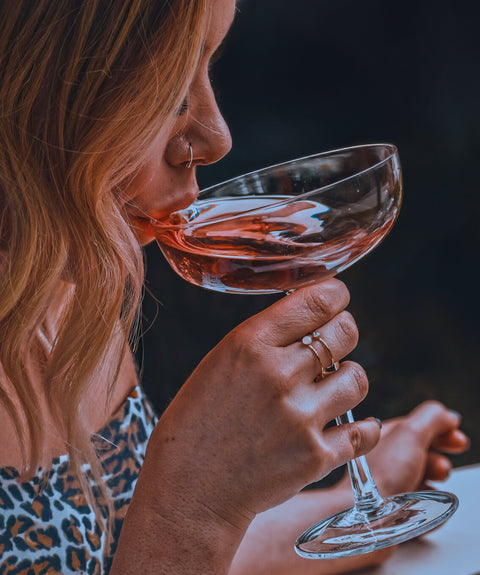“Lashings of pencil shavings”. “Lightly toasted almond skins” You know the sort of thing.
I’ve always had a bit of a problem with wine tasting notes. A lot of them feel overblown and self-indulgent — more about the person writing them than the wine itself. We’ve all read those wildly pretentious descriptions that leave you more confused than curious.
My personal favourite? Wet Labrador.
Not even a dog. Labrador.
But here’s the thing: one of the reasons I love wine is exactly because of the wild variety of flavours you can get. There’s nothing better than trying a new wine and discovering a totally unique, delicious taste. That's the best part.
Which is probably why certain wine descriptions wind me up so much. Wine reviews that are designed to pique interest and build excitement actually push people out. And they leave us to question:
Do most of these flavours really exist in wine at all?
Because I’m passionate about helping people get the most out of wine, I wanted to tackle this. And while my GCSE chemistry might only get me so far, the short answer is:
Yes — most of these flavours do exist.
There are said to be hundreds, if not thousands of different chemical compounds found in wine. These compounds create the flavours we taste, and we (or more specifically, science), have identified many of these as being the same as the ones found in the foods they’d said to resemble.
Take Sauvignon Blanc, for example. It contains high amounts of 3-isobutyl-2-methoxypyrazine, the same compound that is prevalent in green bell peppers. So it makes sense that vegetal note shows up. And probably why I’m not a huge fan.
Or if we look at Rose Oxide, the compound found in both lychees, and Gewurtztraminer grapes. That's what gives those wines such a clearly defined and unique taste. (FYI the compound was first identified in roses, hence the name).
So generally speaking, we know which compounds are found in each wine, and in which other foods these compounds appear.
Then why can wine still be so subjective?
Here’s where things get interesting.
I recently attended a fascinating tasting session run by Sietze Wijma — wine diploma holder, sensory science master, and all-around flavour guru. We used a basic Pinot Grigio as a ‘base wine’, then added single, specific chemical compounds to see how it changed.
The goal was to isolate flavours — and it worked. Most people picked up on flavours such as vanilla, red apple, even petrol.
But here’s the really interesting part. Despite adding the same compound, often our interpretation of these flavours was pretty different. While most identified ‘Eugenol’ as tasting like cloves, others thought it tasted more like nutmeg, or cinnamon. And the reason for that is because Eugenol is present in all three spices.
And that's the same with all compounds, many of which are found in a huge variety of things in varying quantities. In other examples at the session, green bell pepper was interchanged with asparagus. And passion fruit crossed over with gooseberries. More obscurely, the compound 4-mmp is found in both elderflower and cat wee. Do with that information what you will.
So, a lot of subjectiveness with wine can be explained by science. Yes the flavours are real. But our interpretation is personal, shaped by memory and experience. What tastes like aniseed balls to me might remind you of roasted fennel seeds. (Clearly my lack of sophistication at play). And you can see where the wanky terminology may begin.
So is wine all about perception?
Yes and no. Here’s the final curveball. We don’t all physically detect compounds and therefore flavours in the same way. There are some compounds that are basically invisible to certain people. At Sietze’s tasting, I found out I can’t detect Geraniol — the ‘rose’ compound. Even in water, I couldn’t taste anything. Which, weirdly, may explain why I like Turkish Delight.
And whilst that may be slightly disconcerting for a wine expert, we all have certain compounds that we can’t detect. So not everyone will taste the same flavours from each glass, no matter how experienced you are.
So, the flavours are real, but even wine experts won't always agree?
And that’s the amazing thing about wine. The variety, not just in each bottle, but in relation to each other. Wine is chemistry at its basic level, but preference, experience, and association all play a part.
And that should make wine even more fun right, especially if we can make the descriptions as interesting as the wine itself.
So back to that ‘wet labrador’? Ok, maybe let’s settle on ‘wet dog’ and move on?
Like what you’re reading? Check out our club and online shop. We hunt down unexpectedly good wines with a range of different styles and flavours.
#Findyournextfavourite




